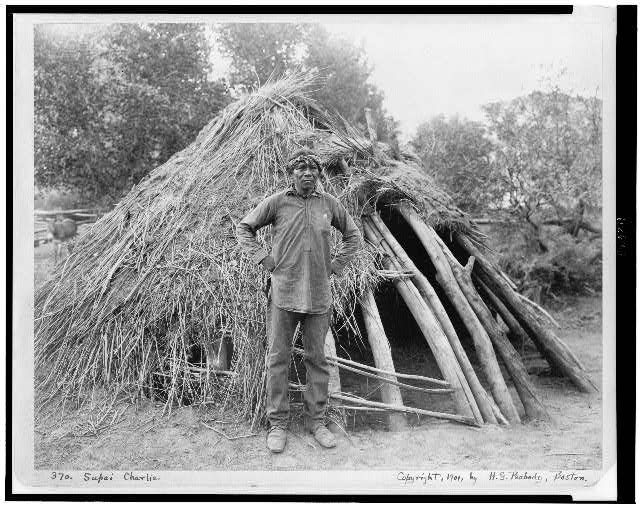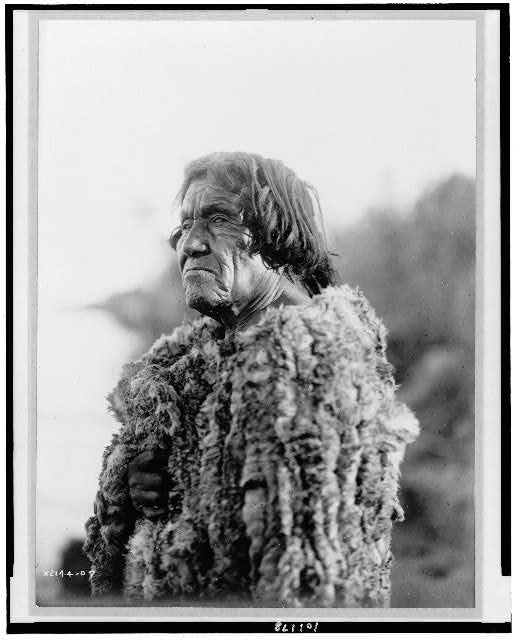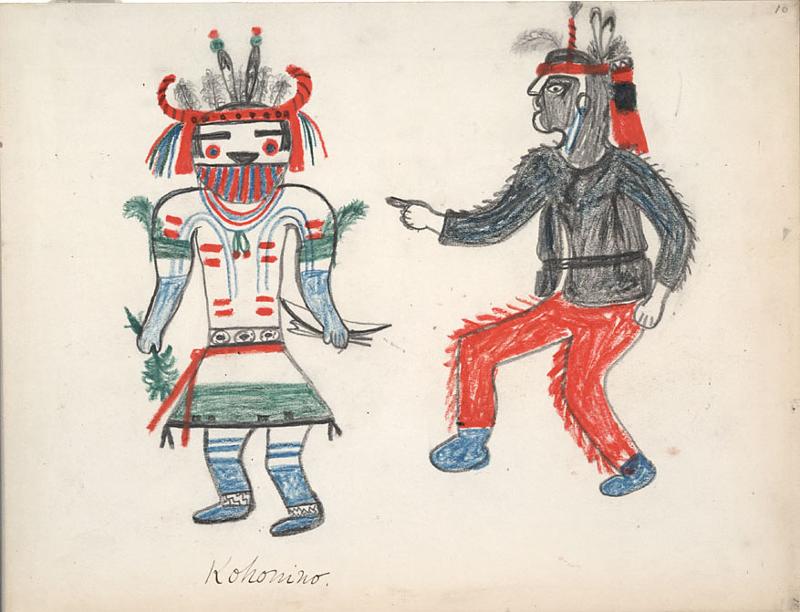Social Organization and Lifeways
|
Despite their involvement in agriculture, both the Havasupai and the Hualapai considered themselves to be foragers whose main homes were on the plateaus. For much of the year they lived in small family groups comprised of perhaps 20 people, but in the winter the entire band would aggregate together in large villages on the plateau. Bands were grouped into one of three subtribes, but subtribal boundaries were not clearly demarcated either socially or spatially. Bands from one subtribe were welcome into the territory of another during periods of food abundances and marriages often occurred across the subtribes. Each family camp and winter settlement had headmen, but—like their lowland counterparts—these leaders had little formal authority.
|
|
|
The pai lived in dome-shaped huts constructed of poles and branches, wore rabbit-skin robes to keep them warm in the winter, and tattooed and painted their faces.
They also maintained widespread trade networks that created strong social ties with neighboring groups. Both groups participated in a trade network that moved goods to and from as far away as the California Coast and northern New Mexico. The Hualapai, who harvested fewer crops that the Havasupai, would (during times of peace) trade deer and other meat to the Mohave in return for supplies of corn and beans. The Havasupai had particularly close trade relations with the Hopi, which provided opportunities not only for exchange of goods but for the creation of close social ties.
Pai home, showing construction of wickip. Circa 1901. Source - http://www.loc.gov/pictures/item/95502974/,Photographer: Henry G. Peabody. |
Pai (or possible Mohave) man wearing rabbit skin robe,1907. Source - http://www.loc.gov/pictures/item/90710179/ ,photographed by Edward S. Curtis. Historic accounts indicate that during times of drought Hopi families sometimes moved in with their Havasupai trading partners. Similarly, some Havasupai elected to go live with the Hopi during the harsh winter months. |
|
The close relationship between the Hopi and Havasupai is reflected in this 1899 drawing of a "Kohonino" katchina, who is interacting with a Hopi impersonating a Havasupai. The "kohonino" was the name given to the Havasupai by the Hopi.
Source - http://sirismm.si.edu/naa/4731/08547310.jpg |
Like the Yumans that lived along the Colorado River, dreaming and shamanism played a major role in their culture. Most shamans were medical practitioners, but others had powers that allowed them to control the weather or ensure hunting successes. Like the River Yumans, these shamans received their powers in dreams. Their mortuary customs also paralleled those of the River Yumans, with the deceased's body being cremated at death and his or her personal property being destroyed
The major ceremony of the Havasupai was the harvest dance held each fall. This ceremony was a major event, lasting several days, and was attended not only by all Havasupai but by Navajos, Hopis, Hualapais , and sometimes even the more distant Zuni. This festival provided an opportunity for feasting, bartering, and visiting and was considered a major social event. Today, this harvest festival continues in the form of the Peach Festival, which is held in August to accommodate the children's boarding school schedules. This festival attracts both Indians from neighboring tribes and Anglo tourists, and today includes not only the traditional feasting and bartering but a rodeo and pageant as well. |
Click on next page to continue.



